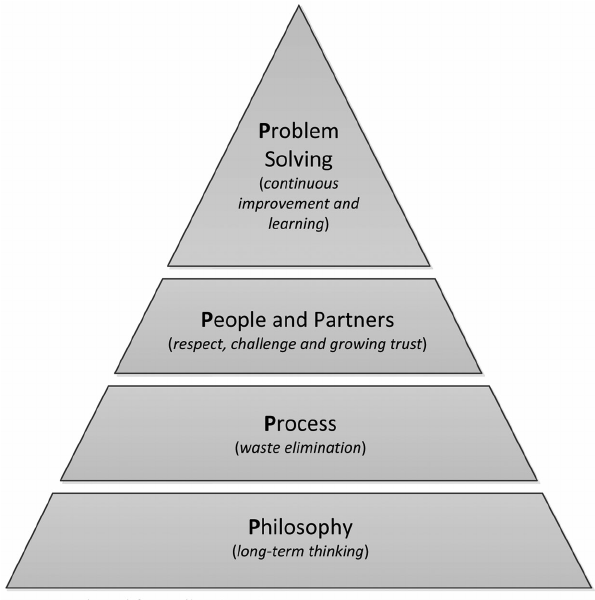A cost reduction program is a type of method which is to improve profitability of the organization or by expected to get a good result that flow to the bottom line of the financial statement and exempted from any serious damage to the organization itself. As this program is much more about reducing cost or reducing expenses of the organization, so a good cost reduction program is all about how to control the damage of an organization. Furthermore, a cost reduction program is said can be improved the profitability of an organization because by reducing expenses, profits are increased without making others changes. On the other hand, if the cost reduction program can matched with a sales improvement program andContinue reading
Operations Management Techniques
Analyzing Toyota’s Recipe for Success – The Toyota Way
The fundamental reason for Toyota’s success in the global marketplace lies in the so called “Toyota way”. The Toyota Way is not only about technology and efficiency, it is about doing the right thing for the company, its employees, the customer and the society as a whole. In other words, the incredible success of the Toyota way is a direct result of operational excellence. Toyota has turned operational excellence into a strategic weapon. This operational excellence is only in part based on tools and quality improvement methods made famous by Toyota in the manufacturing world, such as JIT, Kaizen, and one-piece-flow. Although such techniques helped spawn the “lean manufacturing” revolution, tools and techniques are no secret weapon for transforming aContinue reading
Case Study: Zara’s Operational Model
Founded in 1975, ZARA, a Spanish clothing and accessories retailer was originally the brainchild of the Inditex Group owned by Amancio Ortega. Headquartered in A Coruña, Galicia, Spain, Inditex is the world’s largest fashion retailer with ZARA as its international flagship chain store. Beginning with the single store in Spain to the recent launch into Australia, ZARA currently has over 1,700 stores in 78 countries providing exclusive fashion worldwide. ZARA, alone accounted for 64.6% of the Inditex group turnover in 2010. Over time, it has become one of the notable leaders amongst the fashion brands. ZARA was described by Louis Vuitton fashion director, Daniel Piette as “possibly the most innovative and devastating retailer in the world” and CNN described theContinue reading
Cellular Manufacturing – Meaning, Implementation and Benefits
A cellular manufacturing layout is in direct contradiction to the traditional production line. In the production line, numerous workers are needed to service a single production line running from receiving of raw material to shipping of finished product. A breakdown in staffing or machinery in any part of the line nearly always resulted in the entire process being idled until the specific difficulty in the line was repaired, or re-crewed. With cellular manufacturing, production is divided among groups, or cells, of workers and production machinery. Thus, the breakdown of one cell, due to equipment malfunction or staffing problems, does not radically affect the rest of the production process. Technology and cellular manufacturing have combined to streamline the production processes ofContinue reading
The Toyota Production System (TPS)
A key success factor that enabled Toyota to become the world’s most successful automobile company is its famous manufacturing method, the so called Toyota Production System (TPS). The evolution of the Toyota production system approach can be traced to the period immediately following the second world war when the economic outlook was uncertain and human, natural and capital resources were in limited supply. Against this background, the most important objective of the Toyota System has been to increase production efficiency by consistently and thoroughly eliminating waste. This concept developed between 1948 and 1975 by Toyota’s former president Toyoda Kiichiro and later by Ohno Taiichi and Eiji Toyoda represents a highly efficient production system that is similar to that of HenryContinue reading
Seven Basic Tools of Quality
For the reason of human factor and human reliability, it is inevitable that there could be occurred some kind of faults and errors even in well planned and technically equipped organizations and systems. The errors or unplanned risks that might be happened during the project, can lead the customer to have negative opinion about the management team. Also some faults and risks might not being able to fix or might be too expensive to overcome it. Therefore a well prepared quality management plan is essential for an organization in order to ensure that the management plan that the project team works on, meet the customer satisfaction and their needs. At this stage Ishikawa’s seven quality tools are quite helpful toContinue reading

